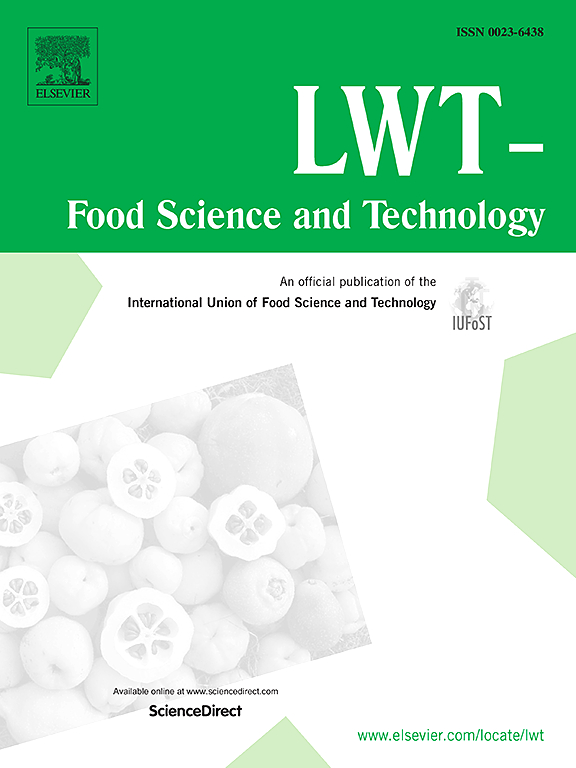Extraction of pumpkin seed oil bodies as natural O/W emulsions: Physicochemical properties, oxidative stability, and component interactions
IF 6
1区 农林科学
Q1 FOOD SCIENCE & TECHNOLOGY
引用次数: 0
Abstract
Pumpkin seed oil bodies (PSOBs) extracted from pumpkin seeds show great potential as naturally occurring O/W emulsions. PSOBs extracted by three different solvents (NaHCO3 solution, Tris-HCl, and Phosphate-buffered saline (PBS)) were obtained and evaluated. The yield of PSOBs exceeded 40% in all cases, with lipid and protein contents (wet basis) ranging from 64.52% to 74.17% and 2.58%–4.23%, respectively. The PSOBs extracted by NaHCO3 solution contained the highest levels of exogenous proteins and exhibited the greatest viscoelasticity, while those extracted by PBS showed superior physical stability. All PSOBs exhibited pseudoplastic fluid behavior, transitioning from a solid-like to a liquid-like state as shear rate increased. PSOBs extracted by NaHCO3 solution displayed spherical oil droplets with intact morphology under fluorescence microscopy. PSOBs extracted by PBS showed intense lipid oxidation, and PSOBs extracted by NaHCO3 solution underwent mainly protein oxidation, while PSOBs extracted by Tris-HCl showed slower lipid oxidation and lower carbonyl content. Additionally, the extraction methods influenced the interconversions between β-structures in the proteins of PSOBs. Changes in the intensity of characteristic peaks near 850 and 830 cm−1 in the Raman spectra indicate Fermi resonance of tyrosine (Tyr) residues, reflecting alterations in the microenvironment of the protein side chain.
求助全文
约1分钟内获得全文
求助全文
来源期刊

LWT - Food Science and Technology
工程技术-食品科技
CiteScore
11.80
自引率
6.70%
发文量
1724
审稿时长
65 days
期刊介绍:
LWT - Food Science and Technology is an international journal that publishes innovative papers in the fields of food chemistry, biochemistry, microbiology, technology and nutrition. The work described should be innovative either in the approach or in the methods used. The significance of the results either for the science community or for the food industry must also be specified. Contributions written in English are welcomed in the form of review articles, short reviews, research papers, and research notes. Papers featuring animal trials and cell cultures are outside the scope of the journal and will not be considered for publication.
 求助内容:
求助内容: 应助结果提醒方式:
应助结果提醒方式:


